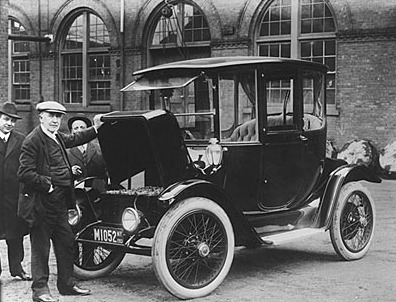In the last years we have all learned that burning hydrocarbons is a solution with an expiry date, as they are non-renewable and scarce raw materials .
We can deal with this problems through hybrid, electric cars or hydrogen-powered vehicles, which have reduced environmental impact. An important mission which turned a blind eye on some aesthetical imperfections, at least until a few years ago. Let’s see how the electric cars’ market (and design) has changed through years.
1913
Most people don’t know that the electric car was among the first models to be invented, tested and marketed. In this photograph, Thomas Edison and an electric car.

Photo, Wikimedia
1974
Fiat City Car X1/23 consisted in the electric variant of the Fiat City Car. In the Summer of 1979 an improved version with nickel-zinc batteries was presented.

1997
Honda EV Plus. First BEV built by a large company, without using lead-acid batteries. Maximum speed over 130 km / h; 24 12V batteries with NiMH accumulator.

2009
Tazzari Zero. Two-seater sports car, built by the Italian Tazzari, characterised by a low weight thanks to its body, which was entirely made in aluminium. Main features: top speed 100 km / h and a range of 140 km.

2012
Tesla model S. A sports sedan that surely does not seem a zero-emission car. Elon Musk’s vehicle showed that an environmentally friendly car can even excite people, every day.

2020
The concept Mercedes Generation EQ anticipates a new type of electric car, almost certainly a crossover..

As can be noticed by looking at these pictures, in the electric car design the aerodynamic coefficient has always been a synonymous with clumsy lines, which penalised the vehicles’beauty. Today this trend is changing in favour of eco-technologies that are increasingly focused on aesthetic research, with a special eye on trendy stylistic evolution.



